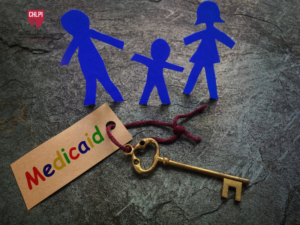By Denae Romero, FLPC Intern, Summer 2024
On June 12 at the ReFED Food Waste Solutions Summit in Baltimore, MD, the USDA Secretary, Tom Vilsack announced the finished version of the “National Strategy for Reducing Food Loss and Waste and Recycling Organics” (the Strategy). Many of the stakeholders at the conference were participants in providing comments on the December 2023 draft version of the Strategy and had been eagerly awaiting the finalized version. One such group was the Zero Food Waste Coalition (ZFWC), a group of like-minded food system stakeholders seeking to build alignment and momentum to develop impactful food loss and waste policies. ZFWC worked with the Harvard Law School Food Law and Policy Clinic to comment on the draft Strategy, commending the interagency effort to halve food loss and waste while also providing substantive recommendations to strengthen the Strategy.
Here is a short description of the priority recommendations and how the final draft measures up to them on a graded scale:
1. Create a whole-of-government strategy to address food loss and waste beyond the current Federal Interagency Collaboration between the USDA, FDA, and EPA.
- Grade: B
- Reason: The Strategy reaffirms the current Federal Interagency Collaboration to Reduce Food Loss and Waste between the USDA, FDA, and EPA. While not included in the Strategy, earlier in June it was announced that the USAID will also be incorporated into the Interagency Collaboration. However, no other agencies are mentioned in the Strategy as collaborating partners to reach the goal of cutting food waste and loss in half.
2. Include lead-by-example commitments where federal agencies and facilities evaluate their operations for ways to internally reduce food loss and waste.
- Grade: A-
- Reason: The Strategy states that the EPA’s Environmentally Preferable Purchasing Program will explore using federal procurement as a mechanism for food waste prevention and for the purchasing of finished compost products. Also, the USDA and EPA commit to promoting food waste reduction, food recovery, and composting practices within their headquarters and aim to expand this initiative to other federal buildings. While these are great strides towards the ZFWC’s recommendations, the strategy omits any type of federal reporting on food surplus and waste that results from their food procurement activities.
3. Commit to more investing in extensive measurement of food loss and waste models and publicly reporting food loss and waste data.
- Grade: A
- Reason: In regard to strategies to improve measurement of food loss and waste, The USDA is co-funding the development of a food waste measurement data model for the household level and the EPA is gathering data on the recycling of organic materials. Both the EPA and USDA are continuing to work with international agencies to share best practices for measuring food waste. Regarding reporting data on food loss and waste, the EPA committed to make any of its data collected publicly available and has stated that it will update the Waste Reduction Model with the latest data for food waste.
4. Unlock funding for food loss and waste infrastructure for food recovery and recycling organics.
- Grade: A
- Reason: The Strategy includes many grant and loan opportunities that can be used for food loss and waste infrastructure. Funding is specifically allocated to the USDA’s Rural Energy for America (REAP) loan program, the USDA Composting and Food Waste Reduction cooperative agreements, the EPA’s Solid Waste Infrastructure for Recycling Grant Program (SWIFR), and the EPA’s Recycling Education and Outreach Program (REO), and the EPA’s Climate Pollution Reduction Grants program (CPRG).
5. Include greater emphasis on upcycled food and animal feed pathways.
- Grade: C
- Reason: The Strategy puts forth that the USDA will provide education and outreach around the Swine Health Protection Act that allows safe treatment of food waste to be repurposed as swine food. Upcycling food is listed as a goal when economically feasible, but no specific strategy is devoted to investing or incentivizing it.
6. Provide more specific commitments around how environmental justice and equity will be promoted.
- Grade: B
- Reason: Provides a specific amount of funding toward environmental and climate justice activities in disadvantaged communities, allocates member seats in the National Environmental Youth Advisory Council to those who are from or work in disadvantaged communities, and pledges to maintain technical assistance to build capacity for navigating federal grant applications in disadvantaged communities.
7. Standardize date labels using FDA and USDA’s pre-existing authorities to prevent misleading labeling.
- Grade: C
- Reason: The agencies acknowledge that a lack of standardization of food date labeling leads to increased food waste due to consumer confusion. While the Strategy states the agencies will continue to support industry efforts to standardize date labels, they do not aim to use their own administrative authority to do so.
Grading Scale
| Grade | Description |
| A | Implemented all ZFWC recommendations or took significant strides towards the recommendations |
| B | Implemented some of the ZFWC recommendations |
| C | Tangentially implemented recommendations, but not really addressing main point |
| D | Did not implement recommendations |
| F | Directly went against recommendations |
Overall, the Strategy is a commendable effort that the FDA, EPA, and USDA are undertaking to formally acknowledge the vital role that reducing food waste plays in curbing climate change and increasing food security. The plan these agencies set forth was the blueprint needed to lead the charge toward a more sustainable and equitable future, and we remain hopeful that other agencies realize they have a stake in this fight and join the effort. With this plan in motion, stakeholders like the ZFWC now have a clear vision of how they can support this intergovernmental effort and use their resources and expertise to supplement this robust plan.


